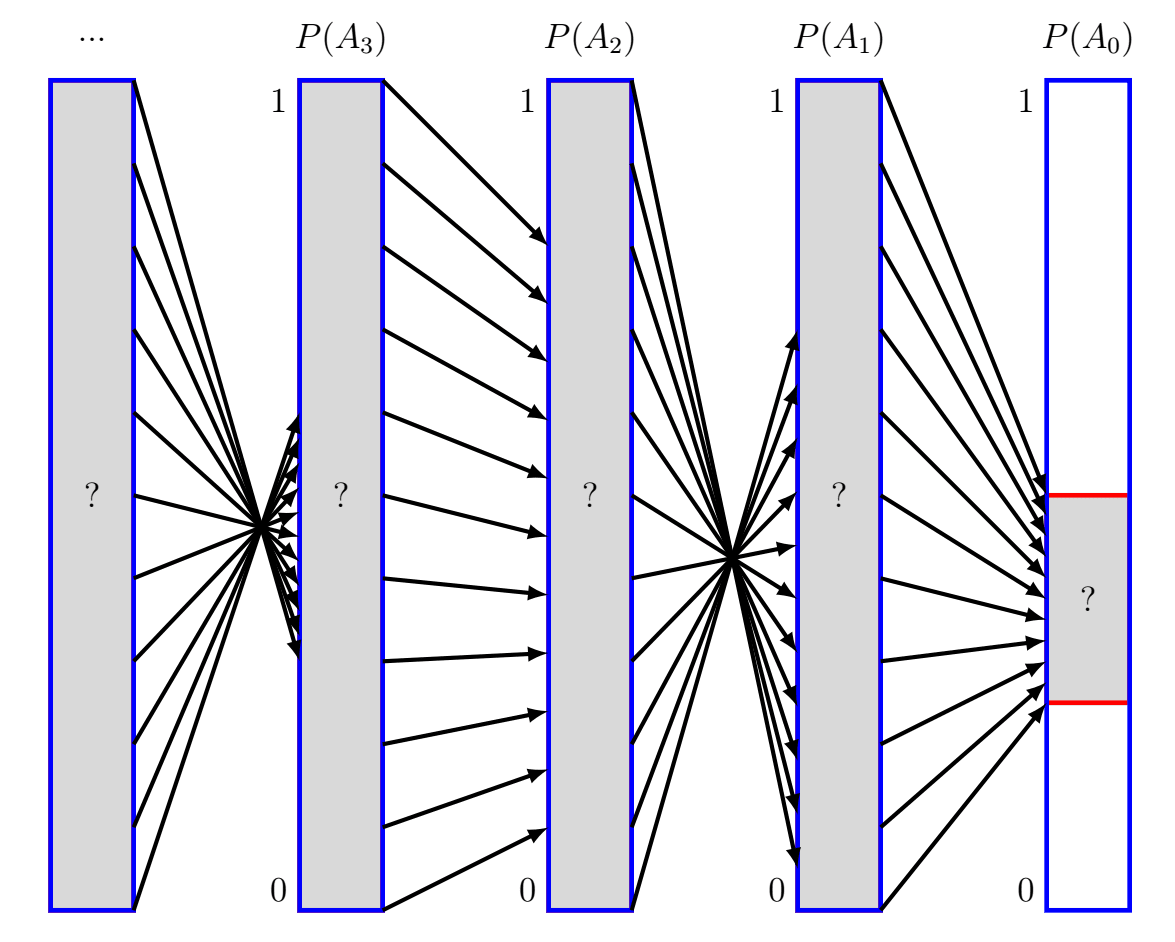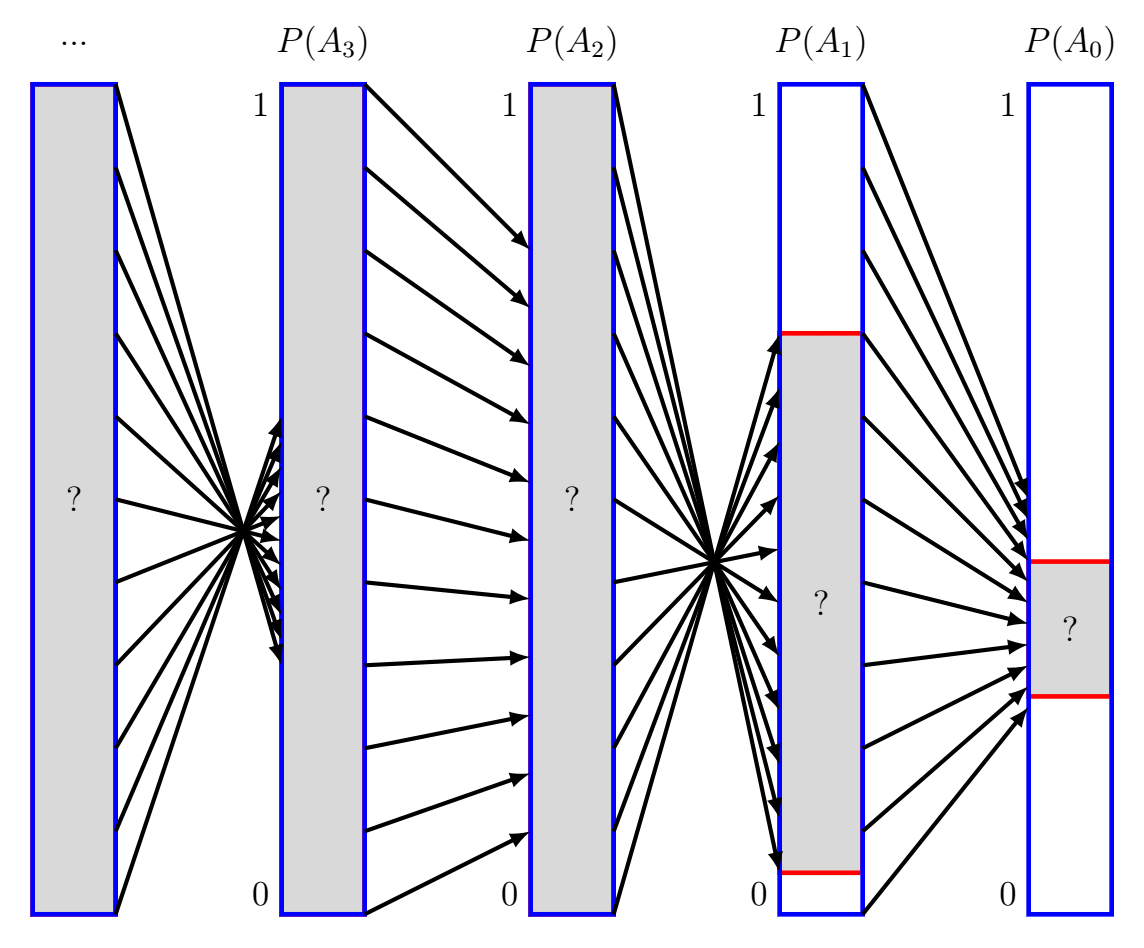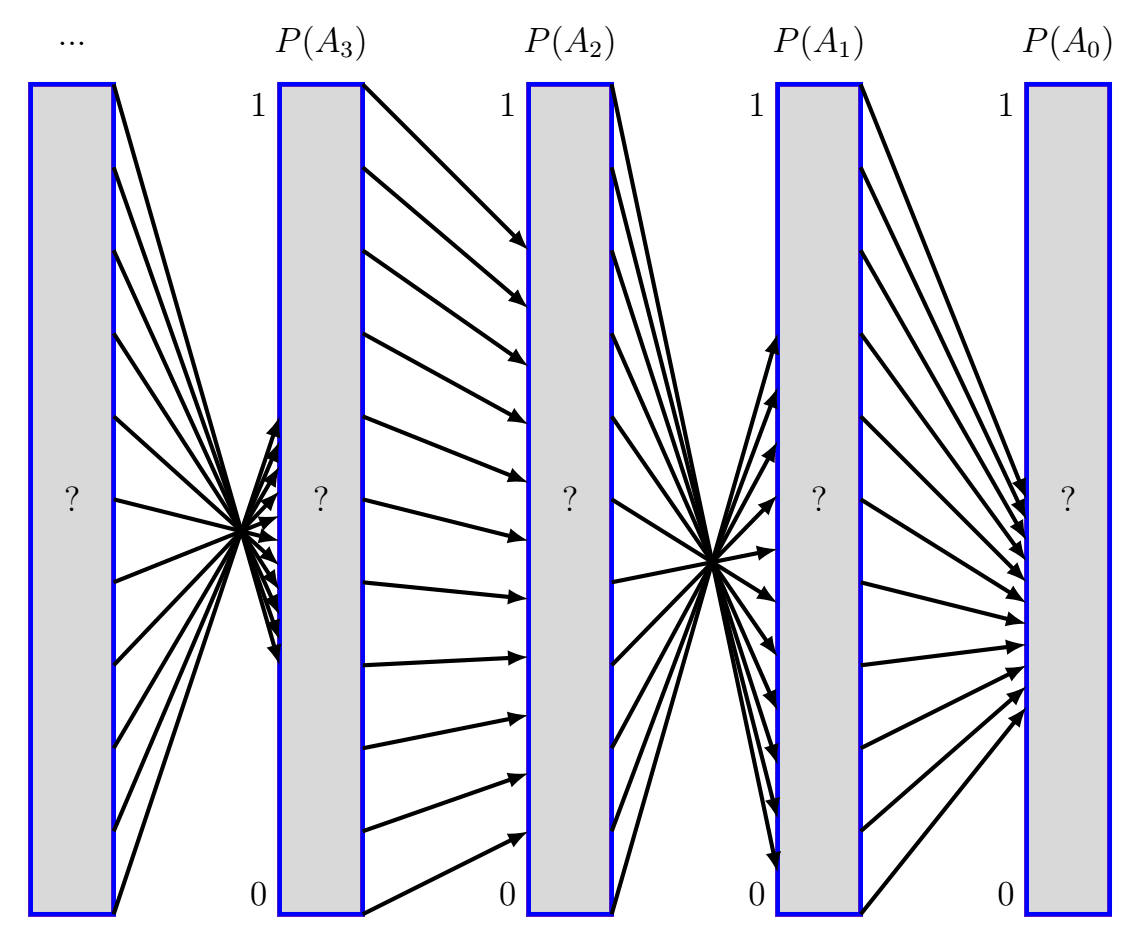Conditionals All The Way Down
post by lunatic_at_large · 2023-09-30T21:06:14.609Z · LW · GW · 2 commentsContents
2 comments
(I thought about this idea on my own before Googling to see if anyone had already written it up. I found something very similar at https://projecteuclid.org/journals/notre-dame-journal-of-formal-logic/volume-50/issue-2/Justification-by-an-Infinity-of-Conditional-Probabilities/10.1215/00294527-2009-005.full so all credit for this line of thinking should go to the authors of that paper. Still, I think that this concept deserves a writeup on Lesswrong and I also want to write a series of posts on this kind of topic so I need to start somewhere. If this idea has already been written up on Lesswrong then please let me know!)
Alice and Bob are driving in a car and Alice wants to know whether the driver in front of them will turn at the next light.
Alice asks Bob, "What's the probability that the driver will turn at the next light?" Unfortunately, Bob doesn't know how to estimate that. However, Bob does know that there are cherry blossoms which might be in bloom off the next exit. Bob is able to use his predictive talent to determine that there's a 50% chance that the driver will turn if there are cherry blossoms on display and that there's a 25% chance that the driver will turn if there aren't any cherry blossoms on display. Bob tells Alice that no other variables will interfere with these conditional probabilities.
Alice then asks Bob, "What's the probability that there will be cherry blossoms on display?" Again, Bob is unable to determine this probability. However, Bob does know that the city government was considering chopping the cherry trees down. Bob tells Alice that if the city chopped them down then there's a 5% chance of finding cherry blossoms and that if the city didn't chop them down then there's a 70% of finding cherry blossoms. Bob knows that no other variables can impact these conditional probabilities.
Alice now asks Bob, "What's the probability that the city cut down the cherry trees?" Predictably, Bob doesn't know how to answer that. However, Bob again uses his magical powers of perception[1] to deduce that there's an 80% chance the city chopped them down if the construction company that was lobbying for them to be cut down won its appeal and a 10% chance the city chopped them down if the construction company that was lobbying for them to be cut down lost its appeal.
Now imagine that this conversation goes on forever: whether the construction company won is determined by whether the pro-business judge was installed which is determined by whether the governor was under pressure and so on. At the end we get an infinite Bayesian network[2] that's a single chain extending infinitely far in one direction. Importantly, there's no "starting" node we can assign an outright probability to.
So Alice will never be able to get an answer, right? If there's no "starting" node we have an outright probability for then how can Alice hope to propagate forward to determine the probability that the driver will turn at the light?
I claim that Alice can actually do pretty well. Let's draw a picture to see why:
I'm using to denote the event where the driver turns right, to denote the event where the cherry blossoms are on display, and so on. If we know for positive integer then we can compute via
where and are the constants which Bob has provided to Alice. Let's think of these as functions defined by where we know that . I've illustrated the behavior of these functions with black arrows in the diagram above.
Alice wants to find . What can she do? Well, she knows that must be an output of , i.e. . Visually:

Alice also knows that is an output of , so actually :

Alice can keep going in this manner, starting farther and farther back to get narrower and narrower bounds on . Ultimately, Alice knows that:
It would be really nice if this intersection contained only a single element, i.e. our chain of conditional probabilities actually specified a value of . When does that happen? Well, will shrink any input interval by a factor of , so if Alice wants to actually get a single answer for then she needs , or equivalently[3] .
That's actually a very reasonable condition! For example, if and are constant across and aren't exactly a distance of apart (i.e. one is and the other is ) then our condition is satisfied. Therefore, if we're presented with an infinitely long descending chain of conditional probabilities then we should expect the non-conditional probabilities along the chain to be uniquely determined.
- ^
Hmmm, Bob seems really good at computing these conditional probabilities, and these events pretty reliably seem to only ever depend on one additional variable. I want to relax some of these assumptions in future posts.
- ^
I'm going to be very mathematically sloppy in this post. I think it's important to ask what our probability space actually is in this setting: there are uncountably infinitely many outcomes (i.e. assignments of values to variables) so we can no longer assume that our probability measure will be induced by a probability mass function. If I were being more formal I would want to check that we can construct probability spaces with these conditional probabilities like we think we can.
- ^
Assuming we don't have for any positive .
2 comments
Comments sorted by top scores.
comment by transhumanist_atom_understander · 2023-10-02T13:56:41.836Z · LW(p) · GW(p)
I think this thought has analogues in Bayesian statistics.
We choose a prior. Let's say, for the effect size of a treatment. What's our prior? Let's say, Gaussian with mean 0, and standard deviation equal to the typical effect size for this kind of treatment.
But how do we know that typical effect size? We could actually treat this prior as a posterior, updated from a uniform prior by previous studies. This would be a Bayesian meta-analysis.
I've never seen anyone formally do a meta-analysis just to get a prior. At some point, you decide your assumed probability distributions are close enough, that more effort wouldn't change the final result. Really, all mathematical modeling is like this. We model the Earth as a point, or a sphere, or a more detailed shape, depending on what we can get away with in our application. We make this judgment informally, but we expect a formal analysis to back it up.
As for these ranges and bounds... that reminds me of the robustness analysis they do in Bayesian statistics. That is, vary the prior and see how it effects the posterior. Generally done within a parametric family of priors, so you just vary the parameters. The hope is that you get about the same results within some reasonable range of priors, but you don't get strict bounds.
Replies from: lunatic_at_large↑ comment by lunatic_at_large · 2023-10-06T04:42:50.797Z · LW(p) · GW(p)
I like these observations! As for your last point about ranges and bounds, I'm actually moving towards relaxing those in future posts: basically I want to look at the tree case where you have more than one variable feeding into each node and I want to argue that even if the conditional probabilities are all 0's and 1's (so we don't get any hard bounds with arguments like the one I present here) there can still be strong concentration towards one answer.
